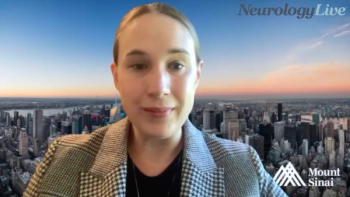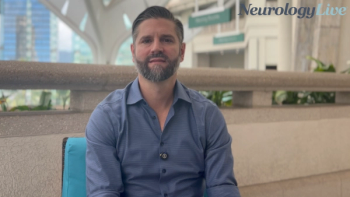
NeuroVoices: Aarushi Suneja, MD, and Zubair Ahmed, MD, on Knowledge Gaps With COVID-19 Headaches

The duo from Cleveland Clinic addressed several of their research projects presented at AHS 2021 that covered a range of COVID-19 related topics, including the unknowns about associated headaches.
At the
The first showed a slight increase in virtual visits by minority groups following the COVID-19 surge, implying that teleneurology was well-received by this population and should be continued to be implemented for long-term access convenience, reducing costs, and improving patient satisfaction.2 They also concluded that telemedicine may have reduced some of the barriers that traditionally affects black, indigenous, and people of color (BIPOC) populations. In addition to telemedicine, the associations of COVID-19 and headache have been a popular topic throughout the pandemic, and something the pair also presented on. Although researchers have concluded there is a link between the 2, the underlying mechanisms of why these headaches occur even after COVID-19 infection is still relatively unknown.
Suneja, headache fellow, and Ahmed, neurologist, both of
NeurologyLive: What are the most pressing research topics related to COVID-19 that should be observed at this stage of the pandemic?
Aarushi Suneja, MD: During and following both COVID-19 infection and vaccinations, headache is a very common sign and symptom of patients presenting to seek medical care not only at our large tertiary care academic center, but also to primary care. Recent statistics from the last year and few months show that more than 50% of patients present with headaches. Understanding and characterizing diagnostic criteria and examining what kind of headache these patients have is crucial, so that we can cater appropriate therapy, especially after we’ve ruled out secondary pathology by imaging. These are the types of patients we’re seeing in the clinic real-time and examining what therapies can be effective for this patient population.
Gaining a better understanding for what kinds of headaches are common with this phenotype is important at this stage of the pandemic. So far, limited information exists regarding COVID-19 related headache, which is considered a manifestation of direct viral invasion of the nervous system and presumed systemic cytokine storm. The subset of patients we’re seeing in our headache centers likely can experience worsening in severity, frequency, and a change in headache pattern as well. We feel that there’s a large unmet need to study and observe these populations in real-time.
What do we currently know about the associations between COVID-19 and headache? What is left to be observed?
Zubair Ahmed, MD: We don’t know a lot about COVID-19, and the headaches associated with it because it’s such a new phenomenon. We’re learning more and a lot of our data is based off of subgroups that we have or groups of physicians who have interest in this. At Cleveland Clinic, we have something referred to as the recovery clinic. We are getting more information as to what symptoms patients have. As Dr. Suneja mentioned, there is an association with headache, and that it can be one of the earliest symptoms of patients presenting with COVID-19, but also of patients who have a post-COVID-19 headache.
For us, it’s important to observe and get a detailed history. Based on that, we can identify some of those symptoms. But for now, it’s difficult to tell the phenotype or the characteristics because they vary. Many patients will present with a migraine-like headache, where they have light sensitivity and sound sensitivity, whereas other patients will have this dull, almost daily headache which seems more like a tension type headache or a new daily persistent headache. Again, as to which treatments are most effective and the long-term prognosis for these patients, only time will tell.
Were you shocked to see the increased use of telemedicine by those in minority communities?
Aarushi Suneja, MD: Intuitively, we found that pre-pandemic there was proportionately less usage of the virtual visits by minatory populations compared to whites. But during the COVID-19 surge, we saw a slight increase in virtual visit usage by minority groups, which interestingly has continued even after the large surge where in-person visits are now resumed. Some of the proposed hypotheses for this increased utilization probably includes the increasing perception for a larger COVID-19-related threat for these minority populations. As we know, there’s a large threat for hospitalization and adverse outcome in this subset population as well. Other factors which stand true for both minority populations and others is that telemedicine reduces barriers that traditionally affect minority populations disproportionately, such as flexible scheduling, which minimizes time away from work and reduces financial barriers.
Zubair Ahmed, MD: There are a number of factors that can affects some of our minority patients in terms of their ability to not only seek health care but providing the opportunity for them to do so. We all have busy schedules and can all appreciate the fact that it’s much easier to get an appointment during lunch instead of taking a day off. Things can be alleviated by telemedicine. The challenge is that sometimes minority patients may not have access to consistent internet. You hear stories of kids having to go to Taco Bell to finish their homework, the same applies in our patient population. If they don’t have internet, they’re not going to be able to do telemedicine visits. Both of those factors play a role. Our study didn’t dig deep enough to identify which factors facilitated a patient’s ability to use telemedicine, but I think both factors are there. We need to do more digging to figure out what we identify that would help patients in terms of using telemedicine and facilitating it for them.
What was the inspiration for your study assessing nerve blocks for the treatment of COVID-19 headache?
Aarushi Suneja, MD: Under the guidance of wonderful mentorship by Dr. Ahmed and Dr. Kriegler, as well as most of our department, I was privileged to be awarded by one of the Frontier in Headache Research awards at the American Headache Society annual meeting. Our proposal seeks to understand and evaluate a much-needed topic of COVID-19-related headaches, which we’ve stressed enough how important and prevalent it’s become in our day-to-day functioning. The purpose of our prospective study is to investigate the effects of bilateral occipital nerve blocks on headache frequency, severity, and the quality of life in these patients who develop post-COVID-19 infection headaches who are treated at our tertiary care center.
In addition to understanding effect treatment modalities, which is crucial, we also plan to characterize demographic data, headache descriptors, and comorbidities of this cohort to aid in formal diagnostic criteria in the future. The aim of this study is both descriptive and interventional in that sense. We plan to evaluate the effectiveness of COVID-19-related headaches within reflux, but also in comparison to conventional pharmacologic treatments for excess migraineosis, or severe tension type headache. Right now, we’re examining at 1- and 2-month intervals in a prospective fashion. Patients will complete pre-visit questionnaires that have close follow-ups with our providers to determine the effectiveness of these therapies. It will be interesting to see both in acute COVID-19-related headaches, but also in our long hauler populations. The long-term goal of this study is to develop a new standard of care for this novel headache type, which is becoming increasingly prevalent. As we’ve stressed time again, there’s a large unmet need currently.
Transcript edited for clarity. For more segments of NeuroVoices,
REFERENCES
1. Suneja A, Kriegler J, Ahmed Z. Nerve blocks for the treatment of COVID-19 headache. Presented at AHS 2021 Scientific Annual Meeting; June 3-6. Abstract
2. Suneja A, Baig A, Mays M, Kriegler J, Ahmed Z. Effects of COVID-19 on access to telemedicine visits at the Cleveland Clinic, a tertiary headache clinic. Presented at AHS 2021 Scientific Annual Meeting; June 3-6. Abstract
Newsletter
Keep your finger on the pulse of neurology—subscribe to NeurologyLive for expert interviews, new data, and breakthrough treatment updates.









































